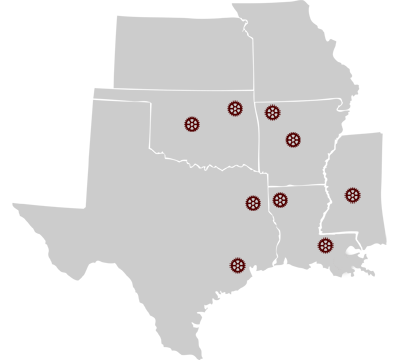S7 Automation Maintenance 1
This course (SCT-S7300S1C) is the first of a two-part series designed for maintainers and “first responders” to Siemens S7 automated control systems.
Maintenance technicians, electricians, supervisors, and others, who need to develop active skills using their Siemens Hardware system, should attend this course to maximize line uptime.
This course also provides a great platform for those new to automation systems and state-of-the-art industrial electronics.
2.6 CEUs (Continuing Education Credits)
PRICE: $3,800.00
What to expect
Brief instructor-led discussions are followed by numerous hands-on exercises using a Totally Integrated Automation (TIA) plant model to develop and reinforce practical experience.
The TIA plant model consists of an:
- S7-300 automation system
- ET200S distributed I/O station
- SIMATIC HMI Touch Panel
- A working conveyor model
Students perform visual and multi-meter wire checks, hardware component diagnostics and troubleshooting as well as equipment replacement and restoring a failed PLC system to a normal operating state.
Upon completion of the course, maintenance technicians should be able to establish communications to a Siemens PLC system, diagnose, troubleshoot, and restore basic faults on an S7 hardware system, reducing costly downtimes.
This course offers 60% hands-on lab time and 40% lecture/discussion/Q&A.
Objectives
Upon completion of this course, the student shall be able to:
- Use a Siemens PG or laptop PC to communicate with an S7 PLC system
- Commission a PLC system:
- Main station
- Remote station
- HMI
- Conveyor
- Examine and complete wiring diagrams for S7300 I/O modules
- Using a Multimeter, wire check S7300 main station and ET200S remote PROFIBUS station I/O modules
- Replace S7 hardware modules, update the hardware configuration and download changes to the PLC
- Diagnose and locate multiple hardware faults using module LEDs & STEP 7 diagnostic tools
- Troubleshoot various basic hardware station faults, module failures, communication faults and restore system operation to a running state
- Wire PROFIBUS DP and PROFINET (RJ45) connectors with corresponding cables
- Diagnose and troubleshoot instructor-set mystery faults with and without Organization Blocks loaded in the CPU
- Monitor the control logic for a PLC conveyor system making light modifications and simple code debugging
- Monitor, Modify and Force I/O
- Backup and restore an S7 project
- Complete an end-of-week comprehensive student project to reinforce and demonstrate learned skills
Topics
- Installing and wiring Step 7 modules on the main rack
- Wire checking STEP 7 modules with a meter
- Installing and wiring ET200s PROFIBUS remote station I/O modules
- Wire checking ET200S modules with a meter
- Installing PROFIBUS DP connectors and cables
- Installing PROFINET connectors and cables
- Setting PG/PC communications to an S7 PLC system using MPI, PROFIBUS, and PROFINET
- Backing up (archiving) and restoring (retrieving) an S7 project
- Using the Hardware Configuration Editor for
- Configuring and parameterizing modules
- Commissioning an S7 PLC system
- Online hardware diagnostics
- Troubleshooting hardware faults
- Commissioning an HMI over
- MPI
- PROFIBUS DP
- PROFINET
- Downloading an HMI Project
- Backing up and restoring an HMI panel
- Troubleshooting various PLC hardware system faults
- Replacing modules, updating and downloading the hardware configuration
- Troubleshooting hardware faults with and without Organization Blocks in the CPU
- Monitoring, modifying and forcing I/O
- Normally open and normally closed field devices vs Normally open and normally closed code contacts
- Using STEP7 tools and HMI for monitoring and controlling a PLC driven conveyor system
REQUEST ON-SITE TRAINING
Modular in design, this course is fully customizable for those interested in on-site training.
Topics are designed for adjustments to meet plant-specific needs.
Get a Quote/Details: This email address is being protected from spambots. You need JavaScript enabled to view it.
Automation Maintenance 1 is a new course designed using a Performance-Based Learning strategy that adopts current Adult Learning and Development standards and practices. The result is a course with well-defined performance-based learning objectives that emphasize task-based assessments of student performance. To successfully complete each module in the course, a student must demonstrate his/her ability to perform a specific automation task demonstrating the application of automation knowledge and skills.
Event Properties
| Event Date | 06-16-2025 8:30 am |
| Event End Date | 06-19-2025 4:30 pm |
| Location | IES HQ - Shreveport, Louisiana |


